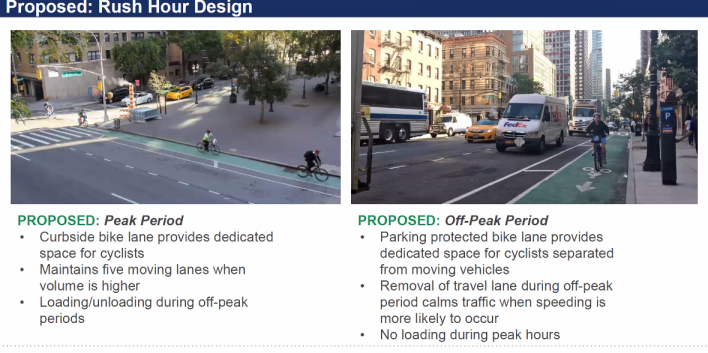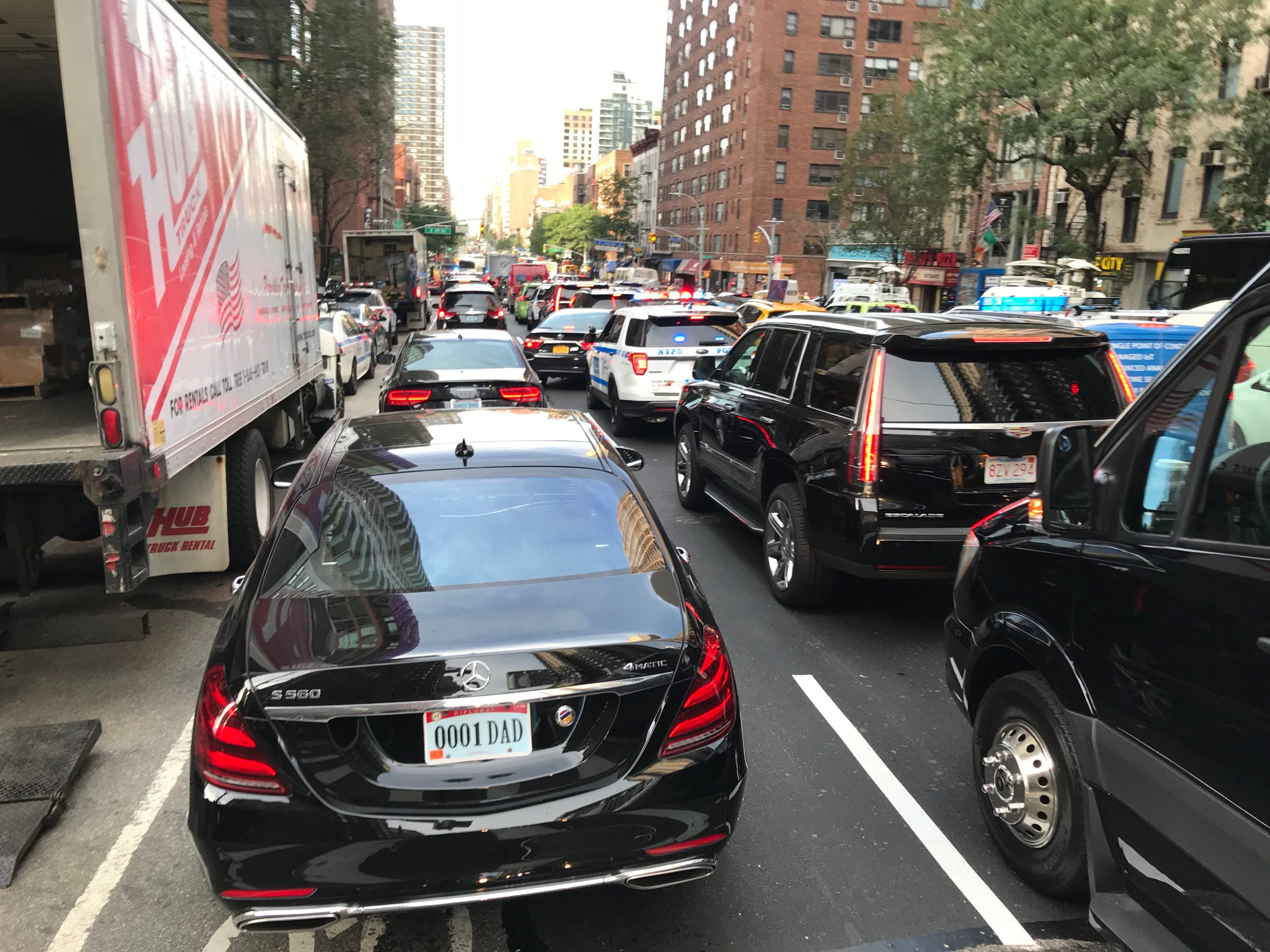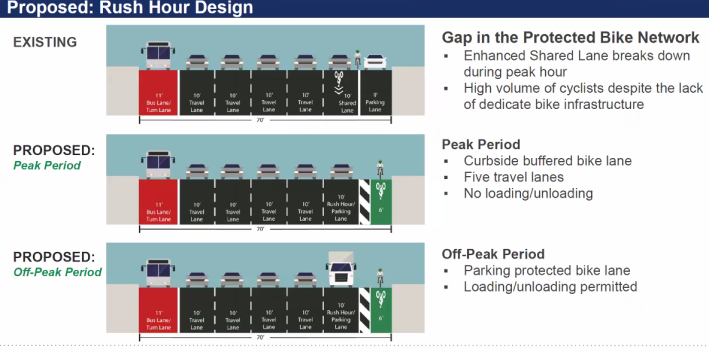A Manhattan community board committee unanimously approved the Department of Transportation's long-awaited plan to fill in the hated gap in Second Avenue's protected bike lane, a plan that includes a major safety upgrade to the area around the entrance to the Queens-Midtown Tunnel.
The only question left is when the project will actually be installed.
With a vote of 12-0 (with one abstention), Community Board 6’s Transportation Committee signed off on the DOT's plan to make a series of improvements along Second Avenue, including installing a bike lane that switches between buffered and parking-protected depending on the time of day, removing the left turn slip lanes at the Manhattan entrance to the Queens-Midtown Tunnel and shifting the bike lane three feet from the curb between 42nd and 43rd Streets in order to accommodate barricades the NYPD sets up on that block to protect the Israeli consulate. (Currently, the protection for cyclists ends abruptly at the consulate’s barricades.)
"If we can implement this project we'll close the [Second Avenue] gap and people can ride a bike in a continuous protected bike lane from Willis Avenue in the Bronx all the way to Jay Street in Downtown Brooklyn," said DOT engineer Nick Carey, explaining the impact of filling the hole.
According to the DOT's design, the bike lane on the eastern curb of Second Avenue will be a buffered and painted bike lane next to six travel lanes during peak travel hours. During off-peak travel hours, the easternmost travel lane will become a parking lane, turning the bike lane into a parking-protected bike lane. Carey told the CB6 that "peak hours" lasted from 7 to 10 a.m. and 3 to 8 p.m., the same parking regulations that exist north of the gap.

At the notorious Queens-Midtown Tunnel entrance, the DOT unveiled a major change to the cycling-hostile road, one that includes a buffered bike lane, the elimination of left turn slip lanes for cars and a cyclist/pedestrian signal phase in an attempt to eliminate conflicts with drivers. According to Carey, the change might result in a slightly longer waits for cars to make a left from Second Avenue into the tunnel, but the DOT determined that the safety benefits far outweighed the increased travel time.
"A vehicular conflict of this magnitude has to be fixed," he said. "Congested or not, it's a safety hazard and not just for people biking, but for people walking, too, and we had an obligation to mitigate it."
Carey also pointed out that even with a slight increase in travel time, the existence of the left turn slip lane into the QMT couldn't make up for the fact that the tunnel itself has only two travel lanes but is fed by five lanes, which creates a natural chokepoint for drivers trying to enter the tunnel.
The plan doesn't have an implementation date at the moment. In 2019, the DOT said that this last piece of the gap would be filled in this year, but Carey said the impact of coronavirus makes it difficult to pin down exactly when in 2020 the project will start or finish.
But he made a Namathian promise.
"Definitely this year," Carey said in response to a question when the bike lane will be installed. “There's a lot of unknowns for us right now. We're using contractors to install markings, and everything is up in the air with COIVID but this is definitely high-priority for us."
The last remaining hole in the Second Avenue protected bike lane has been a longtime safety hazard for city cyclists, who for years have had to contend with mixing it up with drivers trying to make left turns into the tunnel. Between January 2018 and June 2020, there have been 664 crashes on Second Avenue between 34th Street and 43rd Street, including 130 that have injured 29 cyclists, 52 pedestrians and 71 motorists. That's 61 percent more crashes than the the fully protected stretch from 44th Street to 53rd Street, where there have been 412 crashes, including 87 that have injured 23 cyclists, 36 pedestrians and 36 motorists and killed one pedestrian.
And of course, the temporary fix for the Second Avenue gap has not exactly proven hardy in the face of driver entitlement or city neglect, as multiple Streetsblog articles have demonstrated. But Carey expressed excitement at finally taking care of the last piece of the Second Avenue puzzle, issuing a stirring rallying cry at the end of his presentation to the board.
"Let's do this guys. Let's improve safety. Let's improve access for people crossing the Queens-Midtown Tunnel. Let's improve safety at 42nd and 34th streets, and let's close the gap on the Second Avenue protected bike lane. This is it. It's 2020, let's do it," said Carey.
In additional good news for cyclists, the CB6 Transportation Committee also approved the DOT's proposal to replace the underwhelming temporary crosstown bike lanes on 38th Street and 39th Street with permanent protected lanes running between First and Eleventh avenues on each block. Those lanes, which will be a mix of parking-protected and bollard-protected bike lanes, are slated to be installed during either the summer or fall this year according to the DOT.







